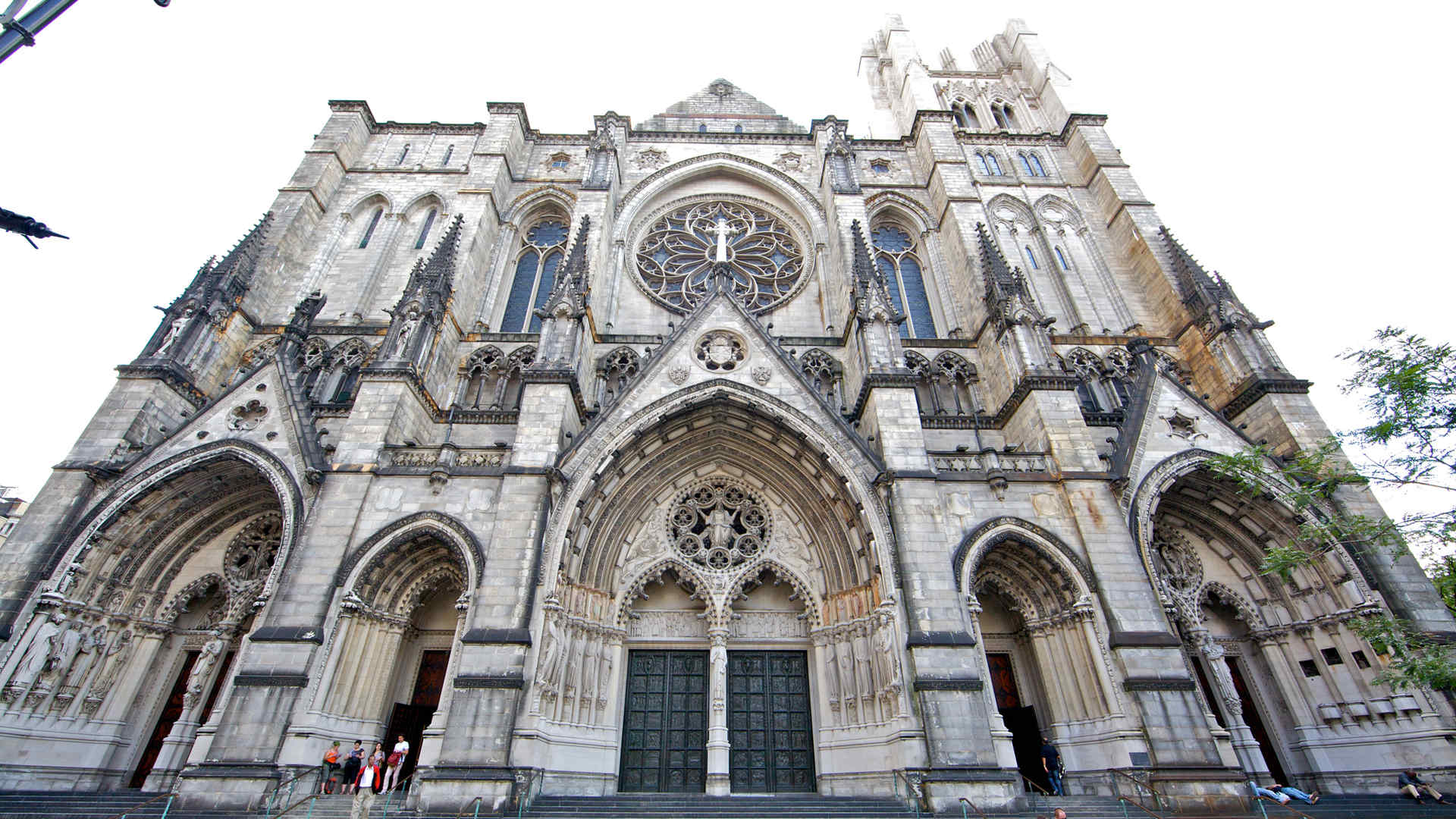
On April 16, Juilliard415 teams up with seven prominent American composers at the Cathedral of St. John the Divine to present The Seven Last Words Project—performances of Joseph Haydn’s monumental sacred string quartet The Seven Last Words of Christ alongside newly commissioned companions to the movements by Reena Esmail (BM ’05, composition), Colin Jacobsen (Pre-College ’94; BM ’99, violin), Jessica Meyer (BM ’96, MM ’98, viola), Nico Muhly (BCJ exchange ’02, MM ’04, composition), Paola Prestini (BM ’98, MM ’00, composition), Caroline Shaw (Creative Associate), and Tania León. The project was the brainchild of second-year Historical Performance violinist Keats Dieffenbach, who writes about its genesis.
My fascination with Haydn’s Seven Last Words of Christ began during my time as an undergraduate at Juilliard studying modern violin with Robert Mann (Diploma ’39, violin; faculty 1946-2011), the founding first violinist of the Juilliard String Quartet. I spent six formative years studying with Bobby, and our lessons often centered around his deeply held belief that music always sings or it dances—except when it speaks. For him, Haydn’s Seven Last Words for string quartet represented the pinnacle of nuanced expression, and the work’s humble explorations of human speech and supplication absorbed us both. As I explored the Seven Last Words at Bobby’s urging, I discovered a newly released period-instrument recording of the work by the masterly Quatuor Mosaïques. I was entranced. Hearing Haydn played on gut strings was a transformative experience that I can trace directly to my decision over a decade later to return to Juilliard to study baroque violin in the Historical Performance program.
Several years before my return to Juilliard, I found myself in conversation with Provost and Dean Ara Guzelimian about his role as a concert presenter and the challenges of programming The Seven Last Words. At the work’s core are a series of seven slow movements of similar affect, and the length and breadth present a formidable challenge to the modern listener who may appreciate contrast more than subtlety. When one hears the work in the setting of a modern concert hall, it is often presented alongside poetry or other readings curated or commissioned for the occasion. Inspired by this modern practice of spoken word pairings, we alighted on a whimsical idea. We imagined a concert experience in which The Seven Last Words would be presented alongside a newly commissioned work that could shed new light on Haydn’s work, and Haydn could in turn create an intimate and deeply spiritual context in which to hear this new music. At the time neither of us was in a position to actively pursue this concept, but nonetheless a spark had been ignited and The Seven Last Words journey had begun.
When I joined the Historical Performance department, it became abundantly clear that this was a setting in which this project could find a loving home and that Juilliard415 was the ideal ensemble to bring the project to life. Presenting The Seven Last Words on historical instruments also created a unique opportunity to commission new work specifically for old instruments. Combining and juxtaposing the old with the new has always been an area of fascination for me, and this process is a significant part of what keeps me engaged in my work as a violinist. Further, I wanted to find a venue for The Seven Last Words that could bring the listener outside the traditional concert hall and return us to the sacred origins of the work, another means of exploring this relationship between old and new. I asked Kent Tritle (BM ’85, MM ’88, organ; MM ’87, choral conducting; faculty 1996-present) whether St. John the Divine might be interested in hosting the project, which I envisioned moving between different areas of the performance space, taking the listener on a guided meditation through each word, across time and space.
With Kent and St. John the Divine on board, Robert Mealy, Benjamin Sosland, and I brainstormed the Herculean task of coordinating seven different yet complementary commissioned works that would interweave themselves seamlessly throughout the Haydn. In addition to creating a broad palate of stylistic interest, it was important to me that we draw from composers hailing from a variety of backgrounds and influences including ethnicity, nationality, and especially gender. Despite an overwhelming number of exceptionally talented women and nonbinary composers writing music today, female composers are woefully underrepresented on concert programs even among the major halls and presenting organizations of New York City. It falls to each of us as individuals to help create the representation we want to see in our community and in the world at large, and I am immensely proud of the incredible group of composers we have assembled for this project.
Keats Dieffenbach (BM ’04, MM ’06, Academy ’12, violin) holds a Historical Performance Scholarship